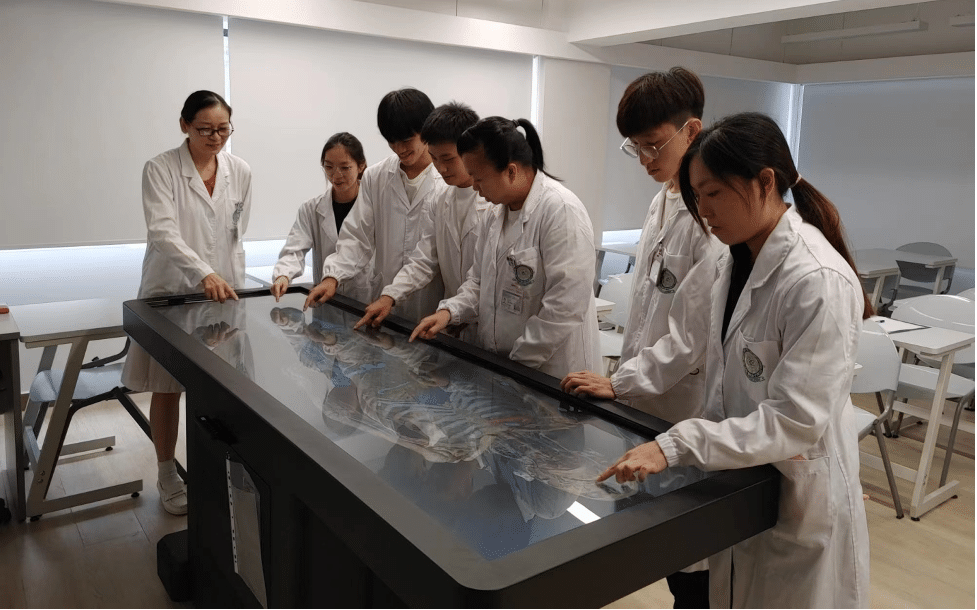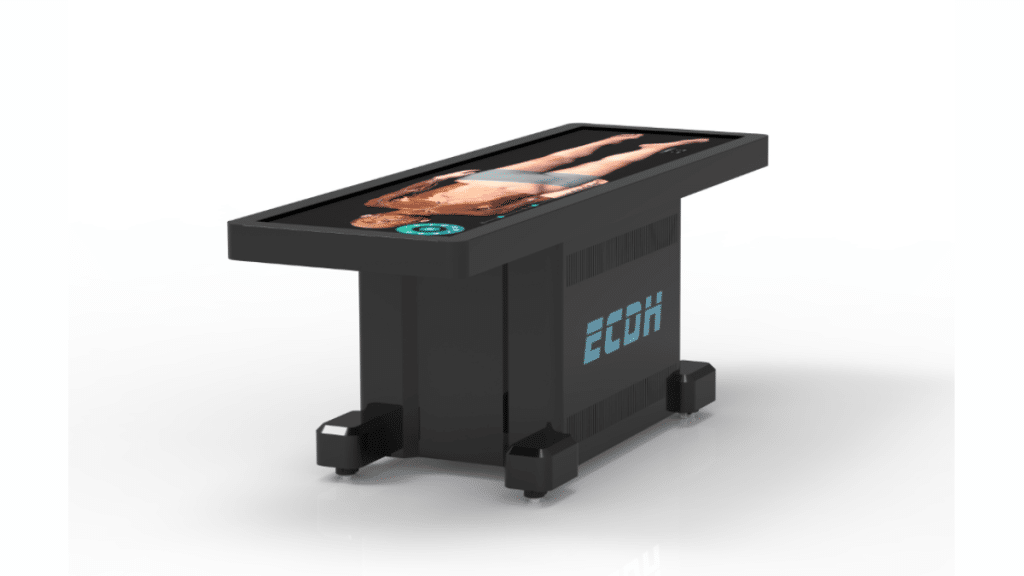Traditional human anatomy has always been the core curriculum for cultivating medical students’ practical skills and theoretical knowledge. By providing an intuitive understanding of human anatomy, it helps students establish a solid clinical foundation, and its importance is irreplaceable.
However, traditional anatomy teaching relies on limited cadaver specimens, which restricts students’ hands-on opportunities. The emergence of virtual anatomy tables offers an innovative solution to this dilemma.
Why does medical education need both, and what can virtual anatomy tables bring? Let’s discuss.
Traditional Anatomy Vs. Virtual Anatomy Table
Why are virtual anatomy tables recommended for education?
1. The Value and Limitations of Traditional Anatomy
Traditional anatomy holds irreplaceable value in medical education, primarily reflected in:
l Real Hands-on Dissection Experience
Through hands-on dissection practice, students can directly touch and observe the texture, layers, and spatial relationships of human tissues, cultivating clinical tactile sensation and operational proficiency.
Plus, when students practically engage with real cadavers, they can cultivate a sense of responsibility. They become more empathetic, which is something that cannot be replicated by a digital 3D anatomy table.
Nonetheless, traditional anatomy also has some limitations:
l Limited Anatomy Resources
Sourcing cadavers relies on donations or specific sources, and institutions with fewer resources may not be able to get one. Hence, not every student has many opportunities and can engage with real specimens.
l High Maintenance Costs
But that’s not all. Maintaining a dissection lab is also a hassle. Medical institutions have to make efforts for climate control, proper storage, and training staff.
Purchasing and replacing chemicals like formaldehyde to preserve the cadaver and complying with regulations are also additional costs. All these things can be an economic burden on educational institutions.
l Ethical Concerns
There are many ethical concerns that surround the traditional anatomy process. Body sourcing, consent, and understanding cultural concerns are all part of this. Besides, there are concerns regarding health hazards, as well as considerations for religious beliefs. [1]
2. What are the Advantages of Virtual Anatomy Tables?
Virtual anatomy tables are quickly making their way into medical education and research, and for all the right reasons. Here are the advantages of digital anatomy tables:
l No Ethical Restrictions
Virtual anatomy tables don’t involve a real cadaver; rather, they show 3D digitized models of the human body for learning. It avoids issues related to body donation, usage, and disposal involved in traditional practices. Therefore, institutionals don’t have to stress about taking consent, sourcing, or navigating complex regulations.
l Access to Diverse Anatomical Resources
Another reason to invest in virtual anatomy tables is their diverse anatomical sources. Students can explore a range of bodies with varying genders, ages, and physiological conditions, compensating for the singularity of traditional specimens.
For instance, if the teacher wants to educate students about Alzheimer’s and its impact on brain functioning, you can manipulate the model to do so.
l Allow Repeated Practice
What we truly like about digital dissection tables is that they are made for repeated use. Users can study and practice on them without stressing about specimen damage or time issues, especially suitable for complex areas such as the skull base and pelvic cavity. This allows students to revisit whenever they want and reinforce their learning for the best outcomes.
l Dynamic Visualization
Virtual dissection tables allow users to rotate, zoom, and manipulate any body part as per their needs. The 3D structure enables users to view each layer of the human structure. Hence, students get a clear understanding of all key concepts, making boring medical studies more fun and engaging.
l Risk-free
Digital anatomy tables are risk-free. Since there’s no real body, operators are not required to handle harmful chemical reagents such as formaldehyde, nor do they need to always worry about operational errors. Additionally, the virtual human body dissection reduces the psychological pressure some students experience from prolonged exposure to cadaver specimens.

Promoting the Integration of Traditional and Virtual Anatomy
The integration of traditional and virtual dissection table methods optimizes the allocation of teaching resources while enhancing learning outcomes through technological means:
- Provide Complementary Training: Students can preview anatomy structures virtually before class and review afterward through repeated practice. The virtual dissection table can also simulate rare cases to broaden students’ knowledge. This preserves the practical value of traditional anatomy while enhancing learning efficiency.
- Use AR/VR: With AR/VR technology, the two-dimensional images can be transformed into a three-dimensional experience, making students feel as if they are in a real dissection scenario. The immersive experience stimulates students’ curiosity and enhances the interactivity and engagement of learning.
Where to Order Virtual Anatomy Tables?
If you wish to introduce advanced virtual anatomy tables to medical universities or educational institutions, Digihuman has your back.
The Digihuman virtual dissection table utilizes real human data modeling to accurately replicate the entire anatomical operation process, alleviating the shortage of cadaver sources in teaching. It is equipped with abundant learning resources, including over 3,000 3D structures, more than 3,000 sectional images, and over 1,700 CT/MRI images, meeting various teaching needs.
As a virtual dissection table manufacturer with independent production and R&D capabilities, they possess professional hardware manufacturing facilities and an experienced R&D team. The product has obtained more than ten certifications, including CE and FCC, and holds over ten patents. Compared to similar products, in addition to significant price advantages, it can also provide customers with multiple product solutions tailored to their needs.
Conclusion
Investing in virtual anatomy tables is a wise move, especially for enhancing students’ learning efficiency. Simply contact Digihuman and select a table that suits your budget and needs.
References
Human body preservation – old and new techniques. Available at: https://pmc.ncbi.nlm.nih.gov/articles/PMC3931544/ (Accessed: 29 July 2025)
